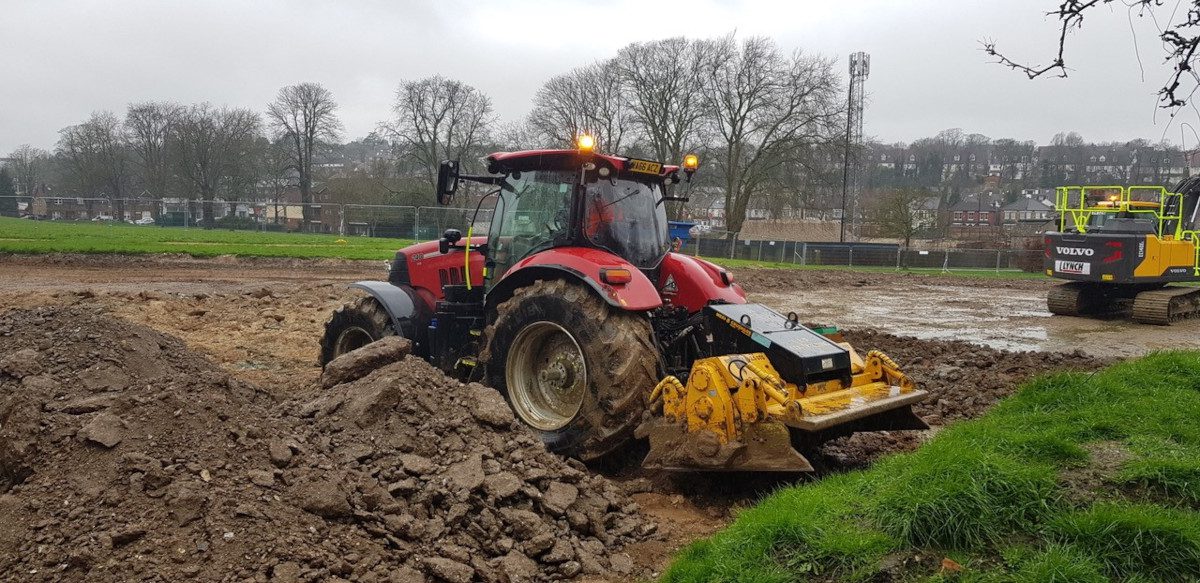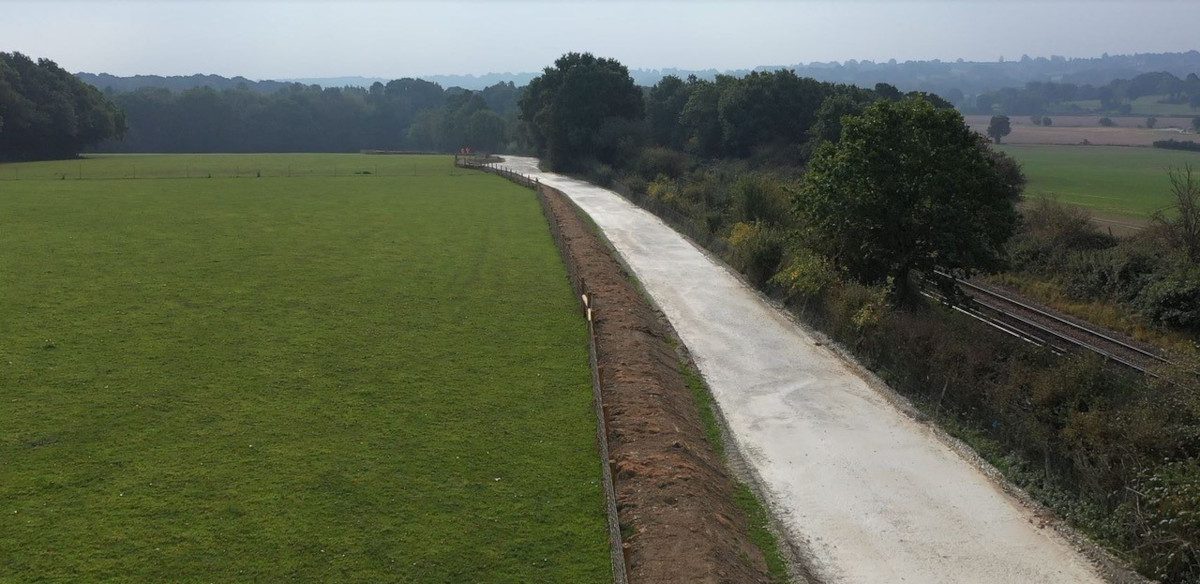
The race is clearly on for net zero, although different timelines are in operation across different parts of the built environment. Water utilities are working to 2030, while the construction industry has 2050 in its sights. Challenging factors with construction include the complexity of the supply chain, and the sheer quantity of waste generated. But new technologies and new ways of conceptualising the problems are starting to appear, as specialist contractor Soil Science explains.
It’s incredibly easy to create waste in the construction industry. Materials such as bricks or aggregates are sold by the pallet or tonne, but it’s routine to buy more than will actually be needed, while product also gets damaged or has to be discarded. Things need to be cut to fit with the excess considered surplus to requirement. It’s often cheaper to over-order than risk running out and have to order a small amount. And all that’s before you consider packaging or the use of plastic!
Ways of minimising waste
Government taxes on waste sound like a strong deterrent but have contractors simply ‘built that into the price’ not because they want to but because they believe viable alternatives don’t exist at the moment? Not creating waste in the first place has to be the answer, even if it’s complicated.
While BIM may have made great strides when it comes to cutting costs and waste on numerous schemes, BIM mainly concentrates on elements above ground, and on the permanent ones, not on groundworks or temporary elements that won’t exist once the project is finished.
By reassessing the way we design our built environment, we can extract the maximum value from existing assets, keep resources and building materials within the system, and substantially reduce waste. How? By using new technologies and seeking out innovative companies.
Decommissioning should be anticipated long in advance of when it actually happens, via procurement and thinking circular. What you specify will ultimately have an impact on what has to be gotten rid of. And this is where innovative companies are starting to make an impact.
Soil Science, for example, is a specialist contractor that builds temporary haul roads, working platforms and compounds for large-scale infrastructure projects such as the £900m Hinkley Connect and the upgrade of the Trans-Pennine Way.
The firm’s SuregroundTM technology is a departure from many conventional practices in that there’s no packaging, no plastic geogrids are used, no material is taken offsite, and no materials are taken to landfill when it’s decommissioned.
When Soil Science builds a temporary road, working platform or compound, topsoils are stripped and saved. Subsoils are analysed to allow for the creation of a tailored binder mix in the lab. Back onsite, specialist dust-free plant rotovates the bespoke binder into the subsoil, while moisture levels are optimised and the surface is compacted. Varying surfacing options can be then applied on top of the treated subsoil to suit specific requirements.
Upon decommissioning, a bespoke reagent is introduced to rotavated subsoils, restoring pH and nutrient to the original DEFRA indices. Existing topsoil is carefully managed, preserved and returned to the area before cultivation restores growth.
Soil Science has been working with Balfour Beatty and National Grid on the £900m Hinkley Connection project since 2019. The scheme will link six million homes and businesses to low carbon electricity from Hinkley Point C Nuclear power station.

Both contractor and client have sought a more sustainable option with access roads and compound surfacing, and this has led to an extensive and successful trial of the SuregroundTM method.
Matthew King, SHESQ Manager, National Grid said: “Sureground™ by Soil Science Ltd is a more sustainable engineering solution for haul roads and laydown areas. It means fewer lorry movements, less vehicle-related emissions and a reduction in the quantity of aggregate transported onto site. Fitting the sustainability agenda, it delivers the best results for our customers, the local community and the environment and makes good business sense.”
The system was also employed in a recent project where Network Rail required the removal of a road bridge in South Croydon on Sanderstead Road (pictured, above). The inner-city location meant a tight timescale and a need for minimal construction traffic.
While every project is different, independently-verified results have shown multiple benefits using Sureground™ including programme reduction times, reduced vehicle movements, reduced community interface and environmental interactions, reduced lifecycle project costs, reduced aggregate importation requirements and the fact that it’s virtually maintenance-free and totally reversible.
While every project by its nature is different, the company regularly publishes independently-verified figures like a 67% reduction in carbon emissions, a 75% reduction in vehicle movements and a 75% reduction in aggregate imports. In fact, overall cost savings for this type of groundwork amount to some 30%. And using this approach, the original soil properties will be returned through the use of a reagent.
How it works
Soil stabilisation is a widely used approach but where the Sureground approach departs from tradition is with the proprietary binder, which can be used in smaller quantities than traditional binders, with far less impact on the soil. At the same time it creates a strong and durable surface. It has been used on haul roads that are now more than two years old yet need virtually no maintenance.
The binder also makes the whole process totally reversible.
On decommissioning, the stone of the temporary road (or working platform or compound) is lifted from the surface and donated to the landowner or main contractor for reuse. The enhanced soil is broken up and a reagent introduced before soils are conditioned to a healthy tilth. Seeding can then be undertaken, or a landowner can plant crops at their convenience.
The entire process is overseen by a UKAS-accredited laboratory. Soil properties are recorded prior to and post stabilisation and this information guides the formulation and addition rate of reagent required. The soil is then rotavated with reagent using a dust-free system before testing to validate that pH and nutrients have returned to their original DEFRA indices.
Soil Science has an expert agricultural team who are available to contractors in land agent and landowner discussions.
Circularity is an urgent priority for the built environment. The Ellen McArthur Foundation suggests adopting circular principles “could reduce global CO2 emissions from building materials by 38% in 2050 by reducing demand for steel, aluminium, cement, and plastic. It could also make the sector more resilient to supply chain disruptions and price volatility of raw materials.”
The group estimates on current projections, “that between now and 2060 across the world the equivalent of the city of Paris will be built each week. The way we design, construct and eventually demolish our built environment is entrenched in the linear take-make-waste economy.”






